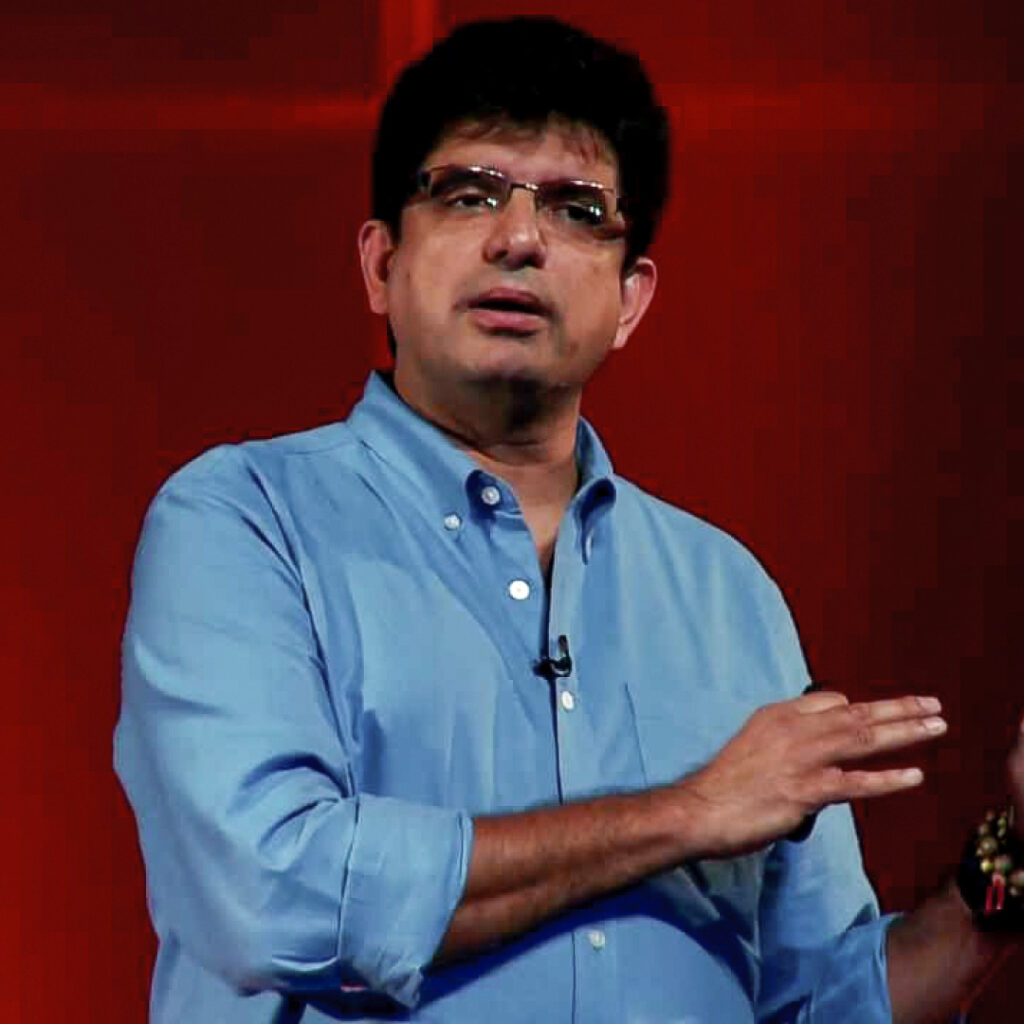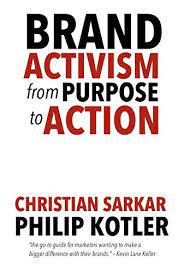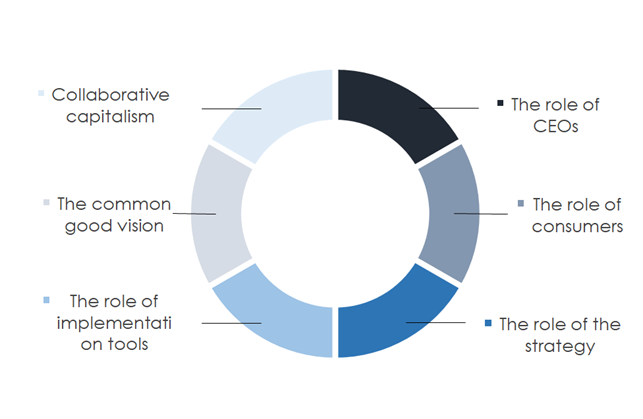
Christian Sarkar (Brand Activism)
“Brand activism: are brands going to be the catalyst enzyme of sustainability?“
This interview takes inspiration from Christian Sarkar and Philip Kotler’s book “Brand Activism” to get a deep insight into the reasons why brands with an old mentality are bound to fail and why brands are to catalyst-like enzymes for sustainability.
Christian Sarkar is an author, entrepreneur, artist, and consultant. He is the founder of Double Loop Marketing LLC, a marketing consultancy. As the co-founder (with Philip Kotler) and editor of The Marketing Journal, he continuously scours the world of marketing for new insights and next practices.
With Enrico Foglia and Philip Kotler he is a co-founder of the Regenerative Marketing Institute — a research and advisory institution dedicated to post-COVID community development and renewal.
He is also the founder of Ecosystematic, an ecosystem strategy consultancy. He is involved in numerous non-profit and public-education projects, including The Wicked7 Project, FIXCapitalism.com and the $300 House Project. In 2021 Christian was named to the Thinkers50 Radar of global management thinkers primarily for his work on brand activism. Learn more at activistbrands.com.

For further details –
http://www.doubleloopmarketing.com/index.html
INTERVIEW – (July 2023)
This interview was made and published in July 2023 on www.lteconomy.org
Subject: Brand Activism
By Dario Ruggiero, Founder of Long Term Economy
Highlights
- Brands must become good citizens of their communities, societies and the planet.
- So, what does a company do? It must become a brand activist and fight to regenerate life on Earth.
- CEOs are brand guardians. When they fail to stand up for the future, they not only let down their future customers, but they are actually destroying brand equity.
- Without social cohesion, we are too busy fighting each other to realize we no longer have clean water, safe crops, or breathable air.
- The Climate Crisis and the Collapse of Society are both symptoms of the same fatal sickness: the destruction of the Common Good.
- Many existing companies are obsolete because they are simply profit-extraction machines.
⇓
Part 1. “The reason why” of Brand Activism
Question 1 | The main features of new brands
Brands must become good citizens of their communities, societies and the planet. They cannot continue to pollute the earth, the air, and the waters with little consequence. In fact, the corporation is an obsolete structure – it is not fit for purpose in today’s permacrisis world. This is the message – to some extent – of our Brand Activism book, and to a fuller extent in our new book on Regeneration.
⇓
Question 2 | The impact of the digital revolution
Why a company should move towards “brand activism”? Is the digital revolution going to reduce companies’ control over the communication of their brand?
Old brands are destroying life on Earth. The misinformation machine that feeds social media is a symptom of a larger problem – the elite capture of all our important institutions – schools, courts, governments, non-profits. Consumers are losing trust with big brands – which was the whole point of branding in the first place.
The rich have a much heavier carbon footprint than the poor. At an individual level, this is a direct problem related to inequality – the world’s richest people are responsible for 70% of carbon emissions, especially if you take into account their investments. At a country level, the richest countries represent only 16 percent of the world population but almost 40 percent of CO2 emissions.
If you dig deeper, you learn that just 100 companies responsible for 71% of global emissions – and it’s the fossil fuel companies. The problem is that the world’s poor are going to face extreme weather and food insecurity (famine) and social unrest through no fault of their own. This is profoundly unjust. In fact, it is planetary genocide and ecocide.
So, what does a company do? It must become a brand activist and fight to regenerate life on Earth. This begins at the local community level, across its supply chains, and in its policies towards its own employees. The same people who complained about being woke and cancel culture are now busy banning books, and cancelling democracy.
If company’s don’t stop this now, we will be left at the mercy of dictators – on a dying planet.
⇓
Question 3 | Make your customers love your brand
It goes back to the idea of trust.
Do we trust a company that mistreats its employees? Or bribes government officials? Or avoids taxes?
No.
Part 2. How to do brand activism: “the six proteins” that make up the “Activist Brand”
Question 4 | The role of CEOs
CEOs are brand guardians. When they fail to stand up for the future, they not only let down their future customers, but they are actually destroying brand equity. No one holds them accountable until it’s too late. This is misleadership. On the other hand, CEOs who are respectful of the needs of society and the needs of their future customers will create strategies that are regenerative. Justice is the strategy – not short-term gains. That’s true brand activism.
⇓
Question 5 | The Platform of purpose
A platform is built to promote like-minded organizations to work together. An Internet of Purpose is open to all.
Social cohesion doesn’t just happen. It has to be nurtured by responsible leadership. Without social cohesion, we are too busy fighting each other to realize we no longer have clean water, safe crops, or breathable air. The politics of polarization destroys societal trust. Without trust, we can longer function as a society, and there is a breakdown of everything – starting with schools, to work, to government. Each community must be given space to reflect their own identity and diversity. We must be tolerant of beliefs that we don’t agree with. At the same time, we must insist that tolerance not be abused – in other words, we must also be intolerant of intolerance.
⇓
Question 6 | Brand activism vs Brand-as-usual
Business as usual is the road to extinction. Brand activism is the first step to reverse that process. The goal is regeneration.
Regeneration, as we define it in our latest book (“REGENERATION: The Future of Community in a Permacrisis World” by Christian Sarkar, Philip Kotler, Enrico Foglia) is the regeneration of the Common Good, not just the environment. Thus, our definition of regeneration is as follows: “Regeneration is a process of rebuilding or renewal of the Common Good – taking an asset, resource, ecosystem, individual, family, organization, community, or place, from crisis and collapse to recovery and renewal.” There are 9 Domains of the Common Good: Social, Economics, Nature, Work, Culture, Media, Law, Technology, and Politics. Our position is this. The Climate Crisis and the Collapse of Society are both symptoms of the same fatal sickness: the destruction of the Common Good. We cannot compartmentalize the climate and separate it from the rest of society or our activities.
So, business as usual is the kiss of death. What business model teaches us to kill our future customers? Apparently, that’s what we are teaching in b-schools.
⇓
Question 7 | Tools and implementation
What are the main principles to follow in the implementation phase and what kind of tools do you propose?
This is the subject of our book on regeneration, and the work we are doing at the Regeneration Marketing Institute. We have some tools available for free download their >> see: https://regenmarketing.org/action/.
⇓
Question 8 | Profits and common good
How to make profits with a common good vision?
Question 9 | Collaborative capitalism and the 1%
How in a world where 1% of the population owns almost half of the global wealth, companies can become democratic, collaborative, and ownership-shared based?
We define a new regenerative business model for companies interested in making the transition. You have to create business value and community value – while protecting and nurturing the Common Good. Walmart is not a regenerative company, no matter what it tries to tell itself on its website. Neither is Starbucks. We were wrong about Starbucks in the book on Brand Activism. We corrected that view in the book on Regeneration.
